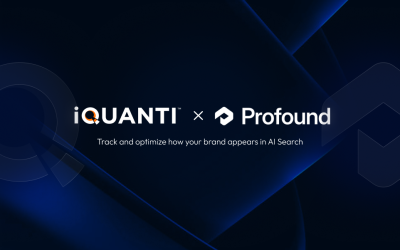By Michael Bertini
As a search strategist with over 14 years of experience moving ranks for enterprise brands, I’ve seen many trends come and go in enterprise SEO.
Today’s brands are much savvier overall than 5 or 10 years ago. But there are still two major SEO gaps that many brands miss.
Why does this matter? After all, if you’re doing most things right in enterprise SEO, aren’t you on the right track?
Yes – but as more businesses get wise to the value of enterprise SEO, you need to stay up to date with the latest developments to ensure you don’t lose rank. 75% of consumers use search when they make a purchase, which means any page on your site can be an entry page that leads to a conversion.
Here are the two things that I still see companies not getting right in enterprise SEO.
1) Differentiating with Supporting Content
If you’re a marketer, you’ve probably heard all about the importance of content. We’ve been hearing “content is king” for years now.
And you might even be doing content marketing already: using research, white papers, infographics, or videos to get more leads into your sales funnel.
What I’m referring to here is supporting content – the kind that supports the consumer on their path to purchase. This is explicitly not content that’s designed to facilitate a sale; more often, it’s educational in nature.
For a financial services firm, supporting content might consist of a page like “what to know before you take out a home loan”. For an insurance company, it could be “how big of a renters insurance policy does a one-bedroom apartment need?”
Creating supporting content adds value in a couple ways. First, becoming an authoritative figure in your niche will help you achieve better rankings. Google increasingly tries to gauge which web pages have the most authority for a particular topic, so as to help consumers get answers they can trust.
If you produce enough content that’s very specific to your niche, Google will be more likely to tag you as a reliable source of information for that niche. That means you’ll appear more prominently in consumer searches related to your vertical.
Informative content can also enhance enterprise SEO by getting you into Answer Box results. Short, succinct (and non-sales) on-page content is most likely to feature in the Answer Box. Of course, assuming you already have strong off-page SEO to support your content and Schema Markup to clarify to Google what the content is about.
Finally, educational content can introduce consumers to your brand earlier in the buying cycle. That can aid recall as shoppers move down the funnel.
Get started with supporting content by first thinking about what your customer wants and needs. Conduct keyword research to identify what people are searching for – then aim to develop a content calendar by the quarter, or even monthly.
2) Cleaning Up Site Architecture
This is something else that’s often not a priority in enterprise SEO. Ideally, your folder (i.e., URL) structure should explain to Google what’s in each folder. But most websites don’t do a good job describing folder contents.
A clear folder structure communicates two things to Google: what an individual page is about (in concert with the page title, meta, H1s, and H2s), and the way that page “nests” under other, higher-level pages.
If you’re a bank with multiple checking account options, a smart architecture would have an overall “checking accounts” page, with individual pages for each checking product under that top-level page. This might look like “https://www.bank.com/checking-accounts,” with “https://www.bank.com/checking-accounts/student-checking” underneath it in the page hierarchy.
Here, you tell Google that you not only have checking accounts but a variety of account options. Then, you may have individual pages underneath each option to communicate specific features – e.g., “https://www.bank.com/checking-accounts/student-checking/terms-and-conditions”.
It’s true that technical factors make up only a small portion of the Google algorithm, but technical SEO can have an outsize impact if you get it wrong. Technical SEO represents only 10% of a page’s ranking, yet if you’re not fully optimizing for it, it could be 90% of the reason your website doesn’t rank where it should.
As with content strategy, keywords are what you should guide your overall approach with technical SEO. That is, your URLs should generally include the keywords you want to rank for.
Once you meet that standard, focus on laying our URL hierarchy in a way that search crawlers can easily ingest and understand. Also – don’t forget an XML sitemap. Upload it directly to the Google Search Console to accelerate page indexing.




